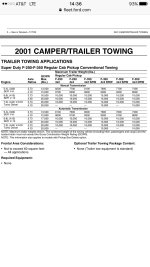If you need the bed then go bumper pull.
Other than that I have been told if you tow occasionally go ahead and get a bumper pull, if you tow a lot then you should go gooseneck. I have a 12K trailer bumper pull and never had any issues towing with it. I have gone up to 10K (trailer and load combined) and pulled it from SD to ID and it did great. Though I only pull that far once a year or once every couple of years. So I don't do a lot of pulling and when I do most of it is local 20 mile type runs. I also normally am towing more about 6K total combined weight.
I would buy the trailer based on what you are going to do 90% of the time and just go slow and careful if you do haul your friends heavy tractor.
Other than that I have been told if you tow occasionally go ahead and get a bumper pull, if you tow a lot then you should go gooseneck. I have a 12K trailer bumper pull and never had any issues towing with it. I have gone up to 10K (trailer and load combined) and pulled it from SD to ID and it did great. Though I only pull that far once a year or once every couple of years. So I don't do a lot of pulling and when I do most of it is local 20 mile type runs. I also normally am towing more about 6K total combined weight.
I would buy the trailer based on what you are going to do 90% of the time and just go slow and careful if you do haul your friends heavy tractor.


